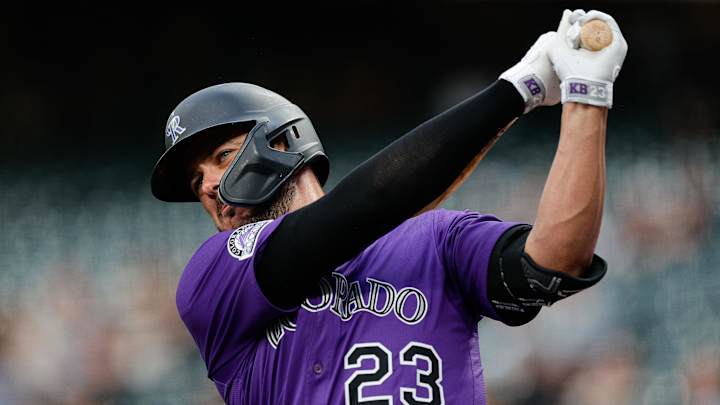It has been a challenging period for the Colorado Rockies, who are currently on course to break the single-season record for losses, a dubious mark set last year by the Chicago White Sox with 121 defeats. This development comes as the Rockies are poised to miss the postseason for the seventh consecutive year, a streak that underscores their ongoing struggles with roster management and talent acquisition.
One of the most significant issues haunting the team is the free-agent signing of Kris Bryant, a move that has been widely criticized as one of the worst contracts in Major League Baseball. The Rockies signed Bryant, the 2015 National League Rookie of the Year and 2016 NL MVP, to a substantial seven-year, $182 million contract before the 2022 season. However, the return on this investment has been minimal, largely due to Bryant’s battle with a debilitating lumbar degenerative disc disease.
The Kris Bryant Contract: A Closer Look
As the Rockies reach the midpoint of Bryant’s contract, the results are stark. Over the span of this agreement, Bryant has managed to play just 170 games, accumulating 712 plate appearances. His performance, reflected in a -1.6 bWAR, includes a .244/.324/.370 slash line and an 84 OPS+. These statistics are further highlighted by his modest tally of 17 home runs, 29 doubles, and 61 RBIs.
“However, at this point, Bryant’s presence on the payroll (and constant absence from the lineup) is little more than an expensive reminder of the Rockies’ ongoing failures as a franchise,” Kerry Miller of Bleacher Report noted, naming Bryant’s deal as the most regrettable contract in MLB by 2025.
The only season Bryant made a positive impact was in 2022, where he posted a 0.7 bWAR over 42 games. Since then, his best performance has been a -0.5 bWAR in 11 games this year, a testament to his declining on-field contributions before being sidelined once again.
Historical Context and Franchise Decisions
The decision to sign Bryant was perplexing from the start, especially following the controversial trade of Nolan Arenado and the departure of Trevor Story in free agency, which yielded only a compensatory pick. These moves have left fans and analysts questioning the strategic direction of the Rockies’ front office.
While injuries are an unpredictable aspect of sports, the decision to invest heavily in Bryant was met with skepticism from the outset. The Rockies’ gamble on Bryant, despite his injury history, is now seen as a misstep that has compounded their on-field challenges.
Expert Opinions and Future Implications
According to sports analysts, the Rockies’ predicament with Bryant’s contract serves as a cautionary tale about the risks of long-term, high-value contracts for players with a history of injuries. The team’s financial commitment to Bryant limits their flexibility in pursuing other talent, further hindering their ability to rebuild effectively.
By the Numbers: Bryant’s Contract
- Contract Value: $182 million over seven years
- Games Played: 170
- bWAR: -1.6
- OPS+: 84
- Home Runs: 17
- RBIs: 61
Looking ahead, the Rockies face a critical juncture. The decision to invest in Bryant has not only affected their current roster but also their long-term planning. As the team continues to navigate these challenges, the focus will inevitably shift to how they can recover from this financial and strategic setback.
Conclusion: Navigating a Rocky Path Forward
As the Rockies grapple with the implications of the Bryant contract, the franchise must reflect on its decision-making processes and consider how to avoid similar pitfalls in the future. With the postseason out of reach once again, the team’s leadership will need to strategize on rebuilding efforts that can restore competitiveness and confidence among their fan base.
While the path forward is fraught with challenges, the lessons learned from the Bryant signing could serve as a catalyst for change, potentially steering the Rockies toward a more promising future.







































































